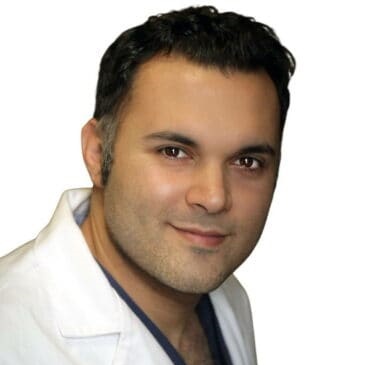What causes a vitamin D deficiency?
Vitamin D deficiency means there is not enough vitamin D for the healthy functioning of the body. A low level of vitamin D puts a person at higher risk of disease.
Multiple factors can cause vitamin D deficiency including:
- poor diet
- malabsorption problem (body doesn’t absorb nutrients from food)
- limited sun exposure for an extended period
- liver or kidneys cannot convert the precursors of vitamin D to its active form
- medications that interfere with the body’s ability to absorb or convert vitamin D to the active form
- lactose intolerance
- a vegan diet
It’s remarkable just how many cellular processes in the body are maintained by vitamin D. When these processes begin to decline, there’s an increased risk of vitamin D deficiency.

Several medical conditions and health problems can lead to vitamin D deficiency, including:
Inflammatory bowel disease
Ulcerative colitis, Crohn’s disease, and celiac disease are all inflammatory bowel diseases that disrupt the normal digestion of fat. Vitamin D is a fat-soluble vitamin that depends on the gut’s ability to absorb dietary fat. So these conditions can lead to vitamin D deficiency.
Obesity
Obesity tends to cause lower blood vitamin D levels. While vitamin D does accumulate and is stored in excess fat tissue, it’s not easily accessible for use by the body when needed. Higher doses of vitamin D supplementation may be needed to achieve the desirable blood level.
Weight loss surgery
Gastric bypass surgery – performed to help people lose weight – involves the removal of the upper part of the small intestine, where vitamin D is absorbed, potentially leading to a deficiency.
Breastfed infants
Breast milk is a poor source of vitamin D. When breastfeeding, infants should be provided an additional supplement of 400 IU (international units) of vitamin D, the recommended daily requirement.
Age
When we age, our bodies do not convert vitamin D to its active form as efficiently. Meaning older adults are at higher risk of vitamin D deficiency.
Skin pigmentation
African Americans and people with darker skin have a decreased ability to synthesize vitamin D precursors. The darker pigmentation is protection from ultraviolet rays, which trigger vitamin D production.
Chronic kidney disease or liver disease
Both the kidney and liver are involved in converting provitamins to the active form of Vitamin D.
Medications
Medications such as cholestyramine (a cholesterol drug), an anti-seizure drug, glucocorticoids, antifungal drugs, and HIV/AIDs drugs can lower vitamin D levels and cause deficiency.
What happens if your vitamin D is too low?
Vitamin D deficiency sets the stage for the onset of several medical conditions and health problems, including:
Loss of bone density
Vitamin D helps manage calcium absorption, which is necessary for bone development and maintenance of bone density.
Low levels of vitamin D and calcium can cause osteoporosis – loss of bone density – in adults and rickets – soft, bendable bones – in children. If adequate calcium and vitamin D status aren’t restored, patients can develop osteomalacia. In adults, osteomalacia causes weak bones, muscle weakness, and bone pain.
In children, osteomalacia can cause muscle weakness, bone pain, and joint deformities.

Hair loss
There is some evidence that having a vitamin D deficiency does cause hair loss and other hair problems. Vitamin D stimulates hair follicles to grow, and so when the body does not have enough, the hair may be affected.
Lymphoma
A Mayo Clinic study found that the amount of Vitamin D in patients being treated for diffuse large B-cell lymphoma was strongly associated with cancer progression and overall survival.
Patients with deficient vitamin D levels had a 150% greater risk of disease progression and a 200% greater risk of dying, compared to patients with optimal vitamin D levels.
Cognitive decline
Vitamin D plays a role in brain function. A meta-analysis reported adults with insufficient vitamin D concentrations were at a 2.4-times greater risk of cognitive impairment than those with sufficient vitamin D levels.
Other problems caused by vitamin D deficiency
Scientists are studying vitamin D for possible connections to several other medical conditions, including type 2 diabetes, high blood pressure, cancer, heart disease, and autoimmune conditions such as multiple sclerosis. More research and clinical trials are needed to better understand the effects of vitamin D on these conditions.
Always discuss your health conditions with your health care provider if there are risk factors for vitamin D deficiency. The provider may recommend a blood test (25-hydroxyvitamin D test) that measures how much vitamin D is in the body.
Purchase Any 4 IV's
Or Injections & Get The 5th Complimentary
Call +1-877-760-3564
Or Click Here to Send Us Email

What are the symptoms of vitamin D deficiency?
Lack of vitamin D can cause:
- bone pain
- muscle weakness
- frequent illness or infection
- bone breaks or fractures
- muscle pain
- weight gain/obesity
Why do I need vitamin D?
Vitamin D plays a vital role in normal bone development and maintenance by increasing magnesium, phosphate, and calcium absorption. Calcium is necessary for strong bones and contributes to the healthy function of the nervous, muscle, and immune systems.
Laboratory studies have shown the health benefits of vitamin D include reducing cancer cell growth, helping control infections, and reducing inflammation. Many of the body’s tissues have vitamin D receptors (areas on the cell sensitive and responsive to vitamin D) which suggest an important role beyond bone health. Scientists are actively investigating other possible functions.
How do I maintain a healthy level of vitamin D?
Vitamin D is synthesized from vitamin D2 (ergocalciferol) and vitamin D3 (cholecalciferol), both of which are converted to other provitamins in the liver. Then, the provitamins are converted to the most active form of vitamin D in the kidneys
The body obtains vitamin D from three sources:
Absorbed through the skin
Vitamin D is called the sunshine vitamin. The body produces vitamin D naturally by absorbing UVB radiation from sun exposure and converting precursor chemicals into vitamin D.
Sun-induced vitamin D synthesis is greatly influenced by the season, time of day, latitude, altitude, air pollution, skin tone, sunscreen, and age. Because many people are concerned about the effects of overexposure to the sun, i.e., skin cancer and aging skin, they look for alternative sources of vitamin D.

Dietary intake
Natural food sources of vitamin D include:
- fatty fish (salmon, tuna, mackerel, sardines, herring)
- beef liver
- cod liver oil
- dairy products like cheese
- mushrooms, and
- egg yolks.
Fortified food where vitamin D has been added includes:
- milk
- breakfast cereals
- orange juice
- yogurt
- soy drinks
Dietary supplements
Vitamin D is found in many multivitamins. There are also vitamin D supplements, both in pills and liquid form. There are two forms of vitamin D supplements:
- Vitamin D2 (ergocalciferol)
- Vitamin D3 (cholecalciferol)
Vitamin D3 is usually the preferred supplement because it tends to be more effective at raising blood levels of vitamin D. It is advised that vitamin D intake from supplements not exceed more than 4,000 IU unless monitored under the supervision of a doctor.
Why choose vitamin D intravenous (IV) therapy?
If vitamin D can be obtained through supplements and food, why would anyone get IV vitamin D treatment? Intravenous vitamin D is introduced into the bloodstream and is the most efficient way to increase your body’s vitamin D levels! A vitamin D drip introduces enough vitamin D into your body for immediate use or to be stored in fatty tissue as a reserve for future use.
With oral supplements and food, vitamin D absorption is delayed by passage through the digestive system before being absorbed by the bloodstream. IV vitamin D supplementation bypasses the digestive system, introducing the vitamins directly into the bloodstream. From there, the body can utilize what it needs and store what it doesn’t.
Why choose IV Vitamin Therapy for your IV vitamin D therapy?
Dr. David Nazarian is board certified in internal medicine and highly trained in the field of traditional and alternative medicine. He has been utilizing IV fluids and vitamin replacement therapies in conjunction with other treatment modalities to treat a variety of medical illnesses and conditions for over 10 years.
Our medical office follows strict guidelines and standards to ensure each patient receives the highest quality sterile vitamins compounded from the best pharmacies only. Our IV drip clinic utilizes only the very best vitamins purchased only from the best pharmacies and thus ensures that it has gone through a set of sterile processes, and quality assurances that meet our highest standards.
We are confident that if you have received IV vitamin treatments in the past at other places you will recognize the difference between our vitamins, our facility, and our practice.
Where can I get IV vitamin D near me?
Busy? Our mobile IV therapy will come to you. Many of our clients who prefer to receive injections in the privacy of a home, hotel room, or office can choose our popular concierge house call service for mobile IV.
IV Vitamin Therapy is conveniently located in Beverly Hills and can provide IV services come to your home, hotel room, or office throughout the Los Angeles area. We serve patients near Beverly Hills, Bel Air, West Hollywood, Santa Monica, West Los Angeles, Culver City, Hollywood, Venice, Marina del Rey, Malibu, Manhattan Beach, Redondo Beach, Downtown Los Angeles, Encino, Woodland Hills, Sherman Oaks, Calabasas, Burbank, Glendale, Hidden Hills, Agoura Hills, Northridge, North Hollywood, Topanga, Canoga Park, Reseda, Valley Glen, Chatsworth, West Hills, Orange County, Winnetka, Universal City, Silverlake, Echo Park, and many more.
Book now at 855-999-5577
Purchase Any 4 IV's
Or Injections & Get The 5th Complimentary
Call +1-877-760-3564
Or Click Here to Send Us Email


